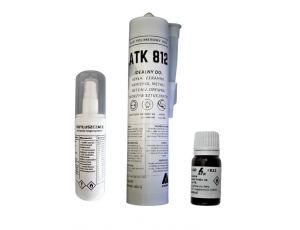PP, PE, POM, PTFE Adhesives
Plastics, the so-called polyolefins have long been considered non-sticky. Currently, there are several adhesives that can connect these plastics. Of course, I am talking about a group of 4 types, that is: PP - polypropylene - raw and with additives such as epdm, t20 or GFPE - pehd, pemd, peld and LLDPE - high to low density polyethylene POM - polyacetal POM-C and POM-HPTFE - the trade name is teflon. Currently, only Acralock PP 1-02 is the strongest and binding all these 4 markings, and it also binds to rubber, metals and other plastics. ATK 812 with ATK 822 primer for large surfaces and flexible joint and ATK PU16 with the same primer, mainly for automotive repairs, are also suitable for polypropylene. There is a bigger problem with PE. If, due to the fast bonding of PP 1-02, we are unable to use, then only ATK 812 with primer 823 remains. With POM and PTFE we narrow down here only to PP 1-02 and atk fix 06 with primer (mainly small elements). Can these adhesives be used to combine these plastics with other substrates? Yes, in fact, you can combine them with most common materials. If PP 1-02 is the strongest adhesive, why don't we just use it? There are 2 reasons. It is a product that cannot fill gaps. There must always be a second surface with a glue thickness of 0.2-1 mm between them, so if you want to fill the defect, you need to make an insert and paste the element. The second reason is the short application time, i.e. 2 minutes. You have to put it on and press it down and let it set completely. Sometimes there may be a third reason. This is a situation where the glue is stiff and if we glue flexible PE foam, we will connect these materials, but in case of twisting or bending, we will break it and it may start to crumble, so we use ATK 812 in these elements.








